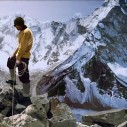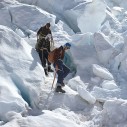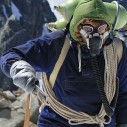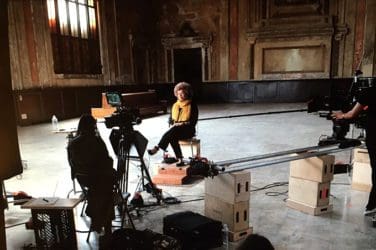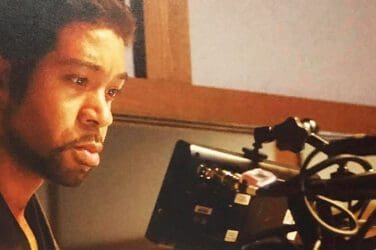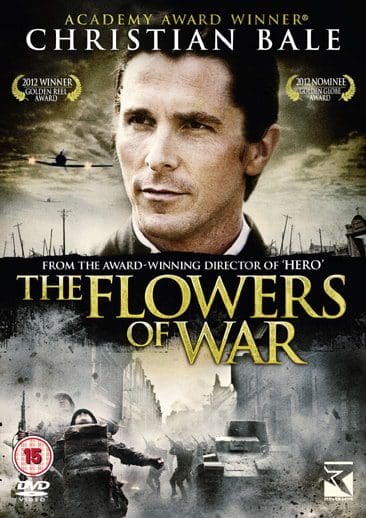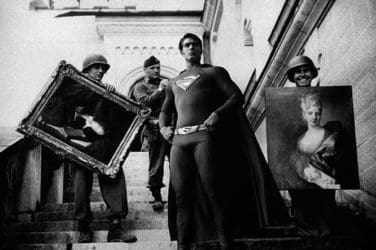Following on from her 2012 television movie Shackleton’s Captain, Kiwi documentary filmmaker Leanne Pooley keeps her gaze transfixed on the inhospitable frozen landscape to this time tell the story behind Sir Edmund Hillary’s famous words, “We knocked the bastard off.”
It is unfair to draw comparisons to Touching the Void – the apex of modern documentaries on the subject of the perils and challenges of mountaineering.
Macdonald crafted an edge of the seat survival thriller whereas Pooley’s ambitions seemingly occupy a different sphere. What Beyond the Edge may lack in suspense it makes up for in abundance elsewhere. Pooley crafts an immersive account of the moment in 1953 when Sir Edmund Hillary and Tenzing Norgay completed the ascent of the Third Pole as Everest was then known, and one of the great barriers that had stood before man fell.
Early on Pooley captures the nationalistic spirit in what was deemed one final hurrah for Great Britain at a time in history when the age of Empire had been replaced by the age of Superpowers. But within the expedition there was the foreign element, notably the two men history has remembered for reaching the summit – New Zealander Edmund Hillary and Napalese Sherpa Tenzing Norgay. One of the compelling narrative threads Pooley weaves throughout the documentary is the conflict between personal achievement and a conscious awareness of nationalistic pride, amidst of course the ultimate end game of “knocking off the bastard.” On one level Beyond the Edge is a story of the individual versus the collective, where man or men can be heroes in the epic confrontation with nature.
Whilst Shackleton’s Captain and Beyond the Edge would make for a fitting double bill, Pooley’s latest film shares an intimate connection with Werner Herzog’s 2007 documentary Encounters at the End of the World. Whilst the words that adorn the poster art echo loudly Hillary’s individual achievement, first and foremost Pooley’s Beyond the Edge celebrates the group effort that knocked off the bastard. Both Beyond the Edge and Encounters at the End of the World put aside the importance placed on national identity, where in the inhospitable environments of our world the thematic thread these filmmakers highlight is the human connection or more fittingly human camaraderie.
Beyond the Edge is a swansong to an age where man set himself against the land. In the present day or in the recent past we have tended to look to space, the oceans or the skies. From ballooning and sailing around the world; from group expeditions to individual pursuit of excellence, Beyond the Edge echoes the change in our relationship to the world and sense of group adventure. Moving beyond an adventure story, Pooley captures a reflection of our present as it contrasts to the accolades and accomplishments of our past.
In the year of the sixtieth anniversary of the expedition’s ascent, Pooley undertook the mission to take us back into the past, and onto a journey to uncover the story of how a group of men pushed beyond the edge of what was then known. It is likely a whole generation are unaware as to who Sir Edmund Hillary was, and it is just as likely that since this monumental achievement did not happen in an age when Hillary and Norgay would have Tweeted from the summit of Everest that a good many know very little of or any of this story. But beyond Hillary and Norgay Pooley sheds light on the group effort required to knock the bastard off, beyond the main expedition to the many Sherpa’s who supported the expedition along the way.
Pooley’s gift to us is employing the cinematic art form to take us on a journey to a different time. The experience of Beyond the edge affords us an opportunity to acquaint ourselves with the past, and the pursuit of big adventure that didn’t entail far off worlds, but rather pushing beyond the edge that stood a little closer to home.
Beyond the Edge film review by Paul Risker.
Beyond the Edge is released in theatres today in both 2D and 3D.


